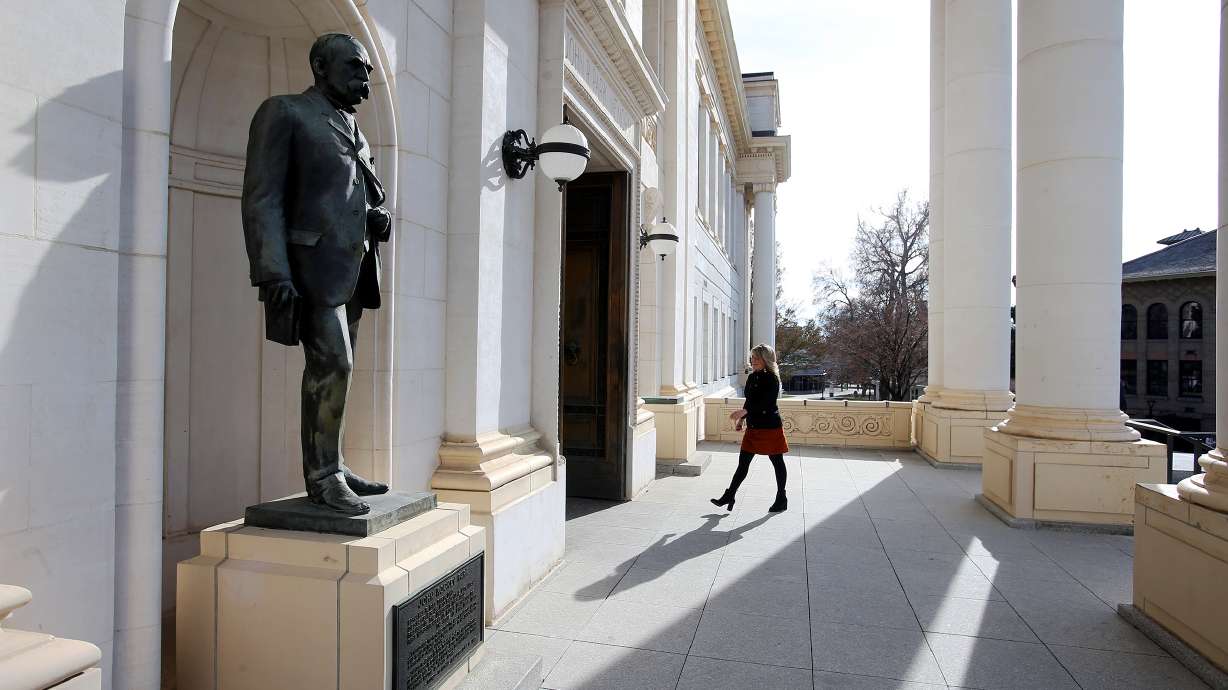Estimated read time: 4-5 minutes
This archived news story is available only for your personal, non-commercial use. Information in the story may be outdated or superseded by additional information. Reading or replaying the story in its archived form does not constitute a republication of the story.
SALT LAKE CITY — When colleges and universities want to demonstrate the effectiveness of changes in policy or practices, there's a tendency to "revert to things we can easily count."
"I'm as guilty of that as anybody," University of Utah President Ruth Watkins told members of the Utah Board of Higher Education on Friday.
But when it comes to making meaningful systemic change in terms of diversity, equity and inclusion at Utah's public colleges and universities, "it won't be enough to stop there," she said.
Watkins said there is "powerful evidence that predominantly white institutions can do a lot of the things that we know help people and still fail on the culturally inclusive experience that makes people feel great about their college experience, their degree and their potential going forward."
As the Utah Board of Higher Education works toward adopting a Utah equity lens framework for the Utah System of Higher Education, Watkins said she was pleased that the discussion has not been limited "to moving percentages, representations and composition from here to here."
Rather, the conversation has been focused on changing outcomes.
"Let's create truly inclusive, culturally competent experiences so that our students can stay, can feel a sense of belonging, they can leave with the degree they came for and ultimately reflect positively on their higher education experience. That's a tall order for us all," Watkins said.
Watkins said a recent conversation with University of California system President Michael V. Drake was instructive. When Drake was president of Ohio State University, the campus took "dramatic steps" to increase Black student enrollment. Drake, a physician scientist, is also Black.
"He said, 'Those students are coming, they're staying, they're supported financially and they're earning their degrees. And they have reported the most negative experiences ever,'" Watkins recounted.
Utah Board of Higher Education member Shawn Newell, who is Black, said Utah's public colleges and universities need to do more to ensure students of color and other underrepresented communities feel safe and welcome so they can achieve academic goals they currently perceive are not possible.
"They've never been welcomed into those spaces. So if we, as leaders, start to develop a system that creates those safe spaces, we'll start to see that influence," he said.
It starts with developing an understanding of each community's barriers and working to eliminate them.
"That's where the hard work comes in," Newell said.
The board's work on equity, diversity and inclusion presents the opportunity to create safe spaces "and say 'You are welcome. This is a place for you to grow. This is a place for you to develop your skill sets so that you can provide for yourself and your family.' Once we start to do that, we'll start to see the snowball take effect," he said.
The framework the board will consider for adoption in December was modeled after the Oregon Higher Education Coordinating Commission's Equity Lens and has been further developed by chief diversity officers of Utah's public colleges and universities.
Adrienne Andrews, Weber State University's assistant vice president for diversity, told the board although the current social and political environments have focused on the importance of anti-racism, it is not a new concept.
"Anti-racism is rooted in action. It's about taking steps to eliminate racism at the individual, institutional and structural levels," Andrews said.
"It is critical and imperative for us to achieve if we really want to be an educated society."
While the framework is student focused, campuses also need to address the needs of diverse university faculty and staff, said Tasha Toy, assistant vice president for campus diversity at Dixie State University.
"Our students need people that look like them in the classroom, and we need to be very large champions in that," said Toy.
Board member Wilford Clyde said it is imperative that the board adopt a framework on equity to guide and inform the Utah System of Higher Education's strategic plan.
"I think it's really important that we not just do this for numbers, and we don't do it just because it's the law, we don't do it just because it's the movement of today. I think we need to do this because it's right," he said.
"And we don't just go through the motions, that we really make a difference in our system, and give everyone the opportunity to succeed in life. I think it's really important that we do it because it's right."









